Short Answer: Avoid glass and bamboo cutting boards. Glass dulls your knives quickly, and they’re quite slippery when wet. Bamboo has a high silica content, dulling your knife faster than a normal wooden cutting board.
The cutting board is usually the first step for any recipe, there’s always a need to prepare ingredients before you start to cook.
With that said, it’s important to choose a cutting board material that will last for a long time and won’t damage your knives at first contact.
There are many possible materials, however today we’re going to mainly focus on which materials are absolutely unacceptable for a cutting board.
Why You Should Avoid Glass Cutting Boards

Glass is probably the last material you should use as a cutting board. Not only it dulls your knife rapidly, but it also makes a terrible sound, and it’s easy to slip up and risk cutting yourself.
So if you use a glass cutting board, you’ll have: a super dull knife and a slippery surface where you risk cutting yourself way more easily.
Basically, one of the worst combinations in a kitchen, right next to “putting your hand in a plugged-in blender” and “metal utensil on a non-stick pan”.
Why Not a Bamboo Cutting Board?
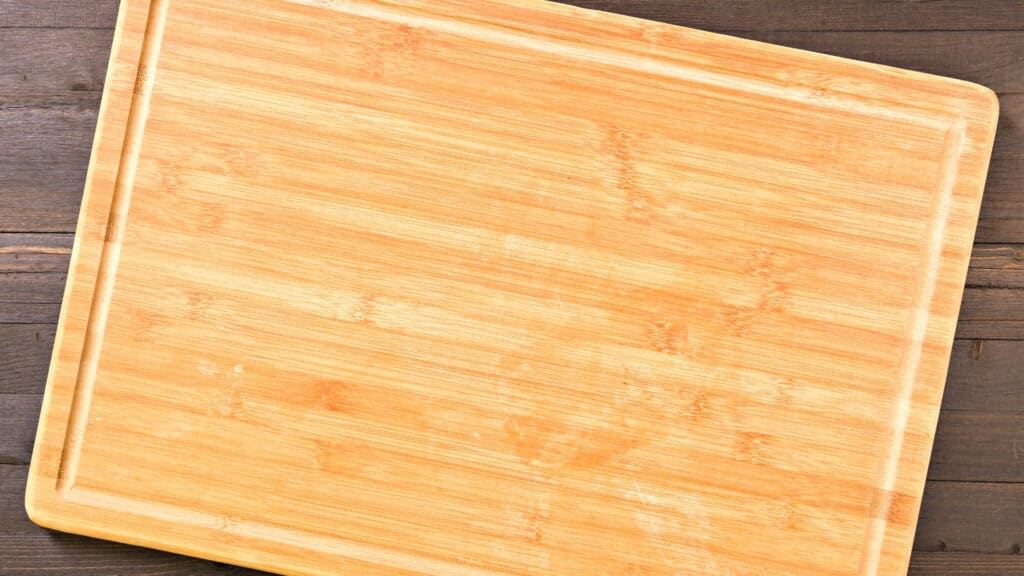
Since they’re a bit harder than normal wood cutting boards, countless people say not to use bamboo cutting boards if you care about the sharpness of your knives. Others say that it’s fine and that they haven’t really seen a difference between a wood and a bamboo cutting board.
In my opinion, it really depends. Ask yourself – how much do you chop daily? It is a lot, or is it more infrequent? What’s a sharp knife to you? These question will help you keep expectations in check when you use bamboo cutting boards.
If you cut a lot of food every single day, then you might notice more of a difference, and you’ll notice yourself needing to sharped your knife more frequently.
If, instead, you don’t chop a lot of food every day, then you probably won’t notice much of a difference. But remember, this also depends on how sharp you keep your knife.
Fun fact: Technically, bamboo isn’t even a wood, it’s a type of grass.
Which Material Is The Best For a Cutting Board?
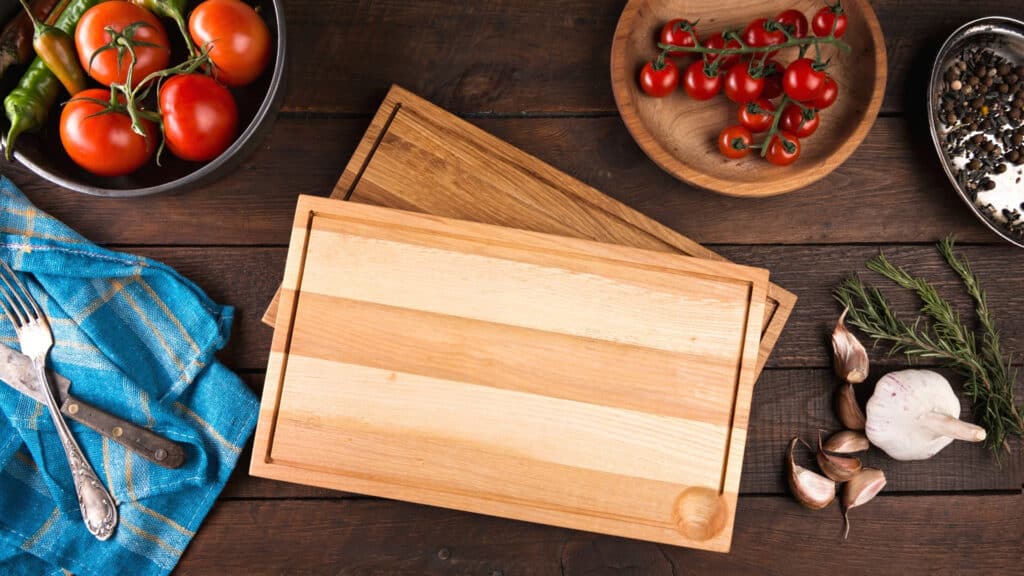
Wood has always been the best material for a cutting board. It’s soft enough that it won’t easily dull your knife even after long use, yet it’s hard enough to not completely destroy.
They’re also naturally antimicrobial and if treated properly with mineral oil and wax, it creates a hydrophobic surface. Where liquids won’t get absorbed into the wood.
They do need a bit of upkeep. However, I think it’s worth to spend the time caring for it, since generally, they will serve you for a lifetime, and they’re biodegradable. So great for the environment.
Which Woods Shouldn’t Be Used For Cutting Boards
Woods that are too soft and porous should be avoided for a cutting board. With a soft wood, you would get big marks and cuts all over the surface of your cutting board, which not only is not visually appealing, but it could harbor some bacteria too.
Some of these woods include:
- Cedar
- Balsa
- Redwood
- Juniper Pine
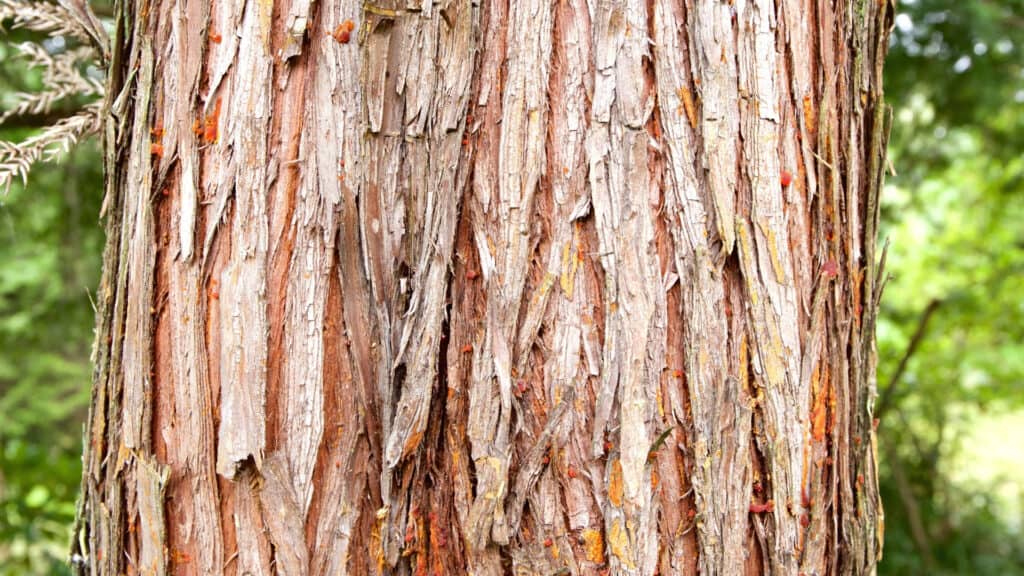
Porous woods might lead to a weaker surface that chip. Build up bacteria, warp, and numerous stains that won’t go away no matter what. Also, any strong smell from particular foods might stay on your board due to its porosity.
Porous woods include:
- Oak
- Mahogany
- Ash

Best Woods For Cutting Boards
There are three main staples when it comes to wood for cutting boards: Maple, Beech and Walnut. They’re the most common, readily available, durable and non-porous. And since they’re so common, they cost relatively less than their counterparts.
Maple
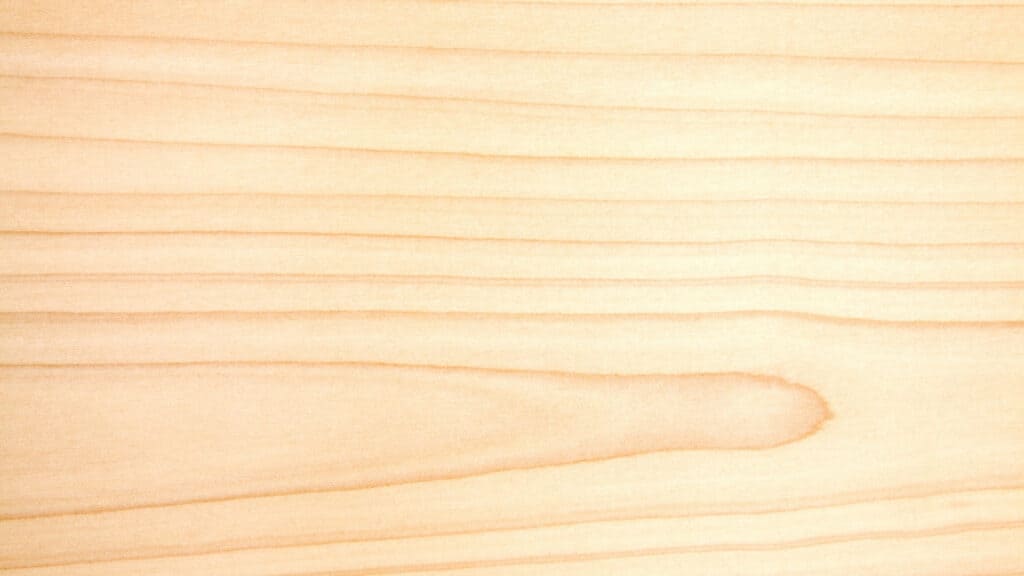
Maple is probably the most common you will see for cutting boards. It’s resists well to scratches and prolonged use, but it’s not so hard that it’ll dull your knives. It’s quite hard to stain and antimicrobial.
Beech
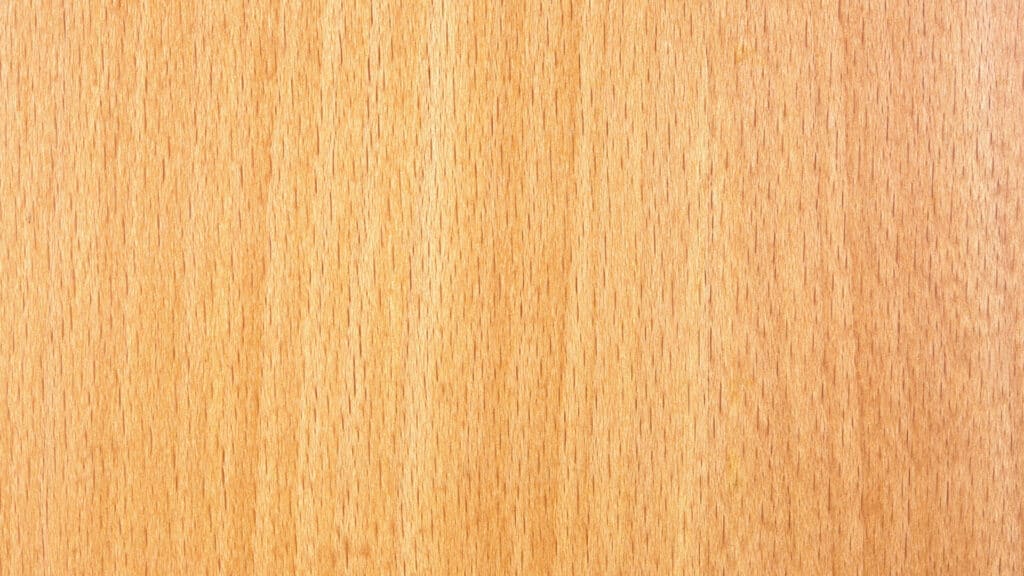
Beech is another common wood used not only in cutting boards but many cooking utensils. It’s non-porous, which will keep away the bacteria. And like maple, it will keep your knives edge without getting scratched easily. The only bad thing about beech is that it will stain easily, and it will be quite hard to remove those stains.
Walnut
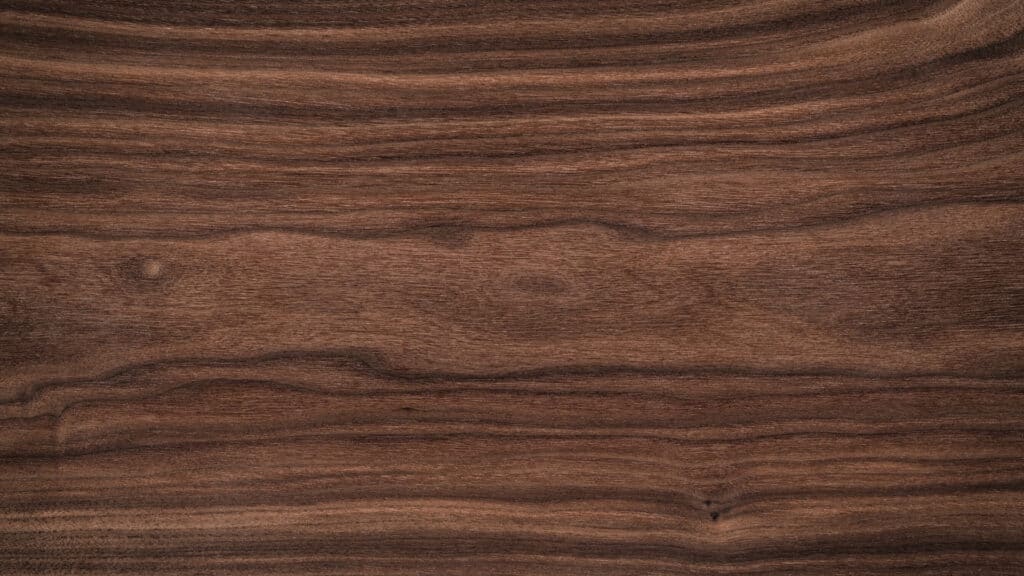
Walnut is probably considered the best in terms of look, it’s a beautiful dark color that transforms your kitchen in a visually stunning way, when sitting on your countertop. With a bit of care, it should keep its looks for a long time. It’s durable and has low porosity, just like the other options.
How About Plastic Cutting Boards?
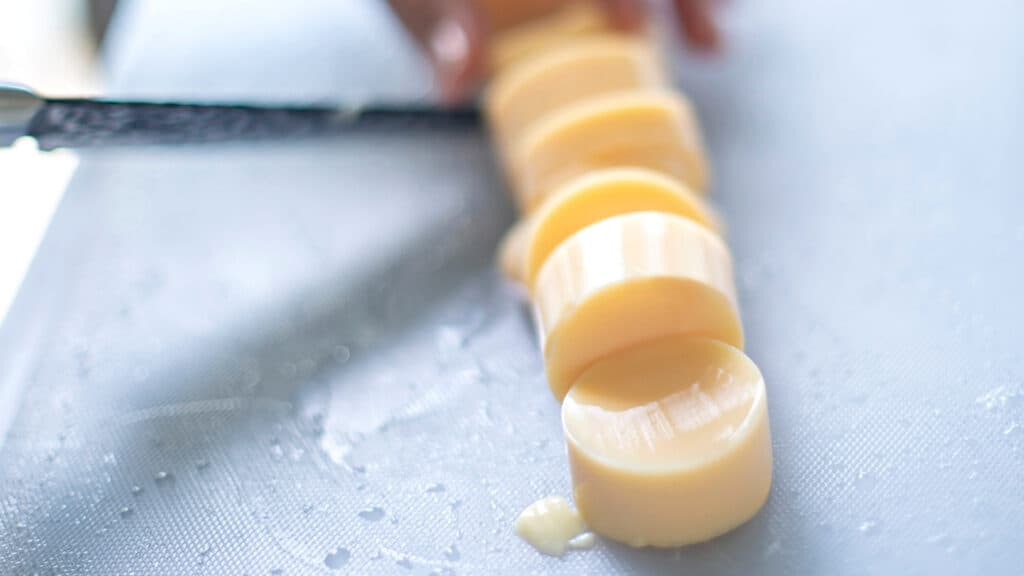
Plastic or more specifically for cutting boards, high density Polyethylene, are often used in many restaurant kitchens for goods reasons.
They don’t absorb anything, they’re easy on your knives, easy to clean, don’t retain any smell and are typically much cheaper than wood. However, if they have deep grooves after a lot of use, they might harbor bacteria. Some people simply use a mix of water and bleach to clean them.
Also, if you’re really lazy and don’t want to hand-wash your cutting board, you can put it in the dishwasher, something you cannot do with a wooden board.
Conclusion
There are so many other choices available to you, that using a glass cutting board should be absolutely unacceptable. Knife aficionados will cringe at the thought of you using a class cutting board and cry for your knives edge.
Do yourself a favor, don’t damage your knife and risk cutting yourself. If you have a glass cutting board, I strongly recommend getting another one.
It might seem expensive to get a wooden one, but it will last you forever with just a little care. And even if you would rather not have to care for a cutting board, a high density plastic one is always available and a bit cheaper.
